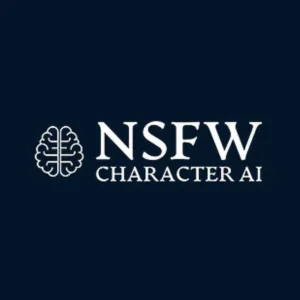Introduction to Character AI NSFW
When you hear the phrase “Character AI NSFW,” it probably raises your eyebrows. It sounds like a mix between cutting-edge tech and something you wouldn’t want to explain during a work meeting. Let’s unpack it. “Character AI” refers to artificial intelligence models built to simulate personalities—these aren’t your stiff, FAQ-answering bots. Instead, they act like believable characters, complete with distinct traits, conversational styles, and even backstories. Now, throw “NSFW” into the mix, meaning “Not Safe For Work,” and you get AI-driven interactions that include explicit, mature, or otherwise adult-oriented content.
This combination has exploded in online discussions because it touches on multiple hot-button issues—technology’s rapid advancement, society’s evolving comfort with digital intimacy, and the thin line between innovation and controversy. For some users, Character AI NSFW is simply an outlet for fantasy, roleplay, or personal expression. For others, it’s an ethical minefield that challenges our understanding of consent, privacy, and morality in a digital world.
The rise of these AI systems also shows how much technology is blurring the line between human and machine interaction. Ten years ago, chatting with an AI was about as engaging as talking to an answering machine. Now? You could hold a late-night conversation with a virtual character that not only remembers your past chats but adapts to your personality over time. That realism is exactly why NSFW content in AI gets so much attention—and why it needs a careful, responsible approach.
What is Character AI?
Character AI is essentially a chatbot with an identity—and often a dramatic one. Unlike a customer support bot that spits out generic answers, a character AI is designed to embody a personality. That personality can be a fictional figure, like a medieval knight or space explorer, or something entirely original created by a developer or community member.
The AI works by processing enormous amounts of text data, learning patterns of speech, tone, and behavior. It uses natural language processing (NLP) and deep learning to predict what to say next, making the conversation flow naturally. In some cases, these characters also “remember” things you’ve said before, so interactions feel continuous and personal rather than robotic.

What makes them fascinating is how they blend storytelling and companionship. You could roleplay a sci-fi adventure, get career advice from a simulated mentor, or just chat about your day with a friendly AI barista who “knows” your favorite coffee order. But the same mechanics that allow these engaging conversations can also support more mature, NSFW scenarios—if the platform permits it.
Importantly, it’s worth stressing that these AIs are not self-aware. They don’t feel emotions or form opinions. Everything they “say” is generated based on data and probability. Still, many users emotionally bond with them, treating them as confidants or companions. That emotional depth is part of why NSFW character AI can feel so real—and why it sparks debate.
Understanding NSFW in AI Context
When talking about NSFW in AI, we’re referring to any conversation or content that’s unsuitable for public or professional settings. This typically means sexual content, explicit roleplay, graphic depictions, or other mature themes. In the AI space, these capabilities are usually heavily restricted—or outright banned—on mainstream platforms for legal and ethical reasons.
Yet, some users seek out or develop AI systems that bypass these restrictions. This often involves training AI models on explicit datasets, so they can produce responses that go beyond what’s allowed on family-friendly services. While this might seem harmless to adults in a private setting, it brings several challenges: protecting minors from accessing it, preventing exploitation, and ensuring the AI doesn’t unintentionally promote harmful ideas.
From a technical standpoint, enabling NSFW AI interactions is no small feat. Developers need to create specialized datasets, often drawn from adult fiction, roleplay logs, or explicit literature. They also have to fine-tune the model so that it can handle mature themes without breaking conversational flow. On the flip side, they may add safeguards—like content filters, trigger warnings, or user verification systems—to reduce the risk of misuse.
The big question is: where’s the line? Some argue NSFW AI is just an extension of adult entertainment into the digital age. Others warn that giving AI “uncensored” freedom could normalize unhealthy behaviors or make it harder to enforce legal protections online.
Why This Topic Has Gained Attention
The buzz around Character AI NSFW comes from a perfect storm of technological progress, shifting cultural norms, and controversy-driven media coverage.
From the tech side, AI has become shockingly good at understanding nuance, humor, and emotional cues. This makes roleplay—NSFW or otherwise—feel incredibly lifelike. An AI character can flirt, tease, or respond with wit, making the experience feel almost human. Combine that with the anonymity of online interaction, and you’ve got a recipe for explosive growth in interest.
Culturally, people are becoming more open to digital companionship. The stigma around virtual relationships is fading, replaced by curiosity and acceptance. In the same way dating apps normalized meeting partners online, AI may normalize having emotional or intimate interactions with digital entities.
And then there’s the media. Every time a story breaks about an AI platform’s NSFW filters being bypassed or a controversial AI interaction going viral, it reignites the debate. The coverage often mixes fascination with alarm, which only fuels public interest. Some articles paint NSFW AI as a dangerous frontier, while others treat it as a harmless—if unconventional—form of entertainment.

The Evolution of Character AI
The journey from early chatbots to today’s NSFW-capable AI characters is like comparing a flip phone to a smartphone—it’s not just an upgrade; it’s a complete transformation.
Back in the 1960s, ELIZA was one of the first chatbots, and it could only respond with pre-written phrases, often repeating your own words back at you. Fast-forward to the 2000s, and you had bots like Cleverbot, which felt more spontaneous but still lacked depth.
The real leap came with deep learning and transformer-based models like GPT. These could generate responses on the fly, adapt to context, and even mimic specific personalities. Character AI took these advances and applied them to immersive, roleplay-driven experiences. Instead of answering “What’s the weather?” a character AI might say, “Looks like rain today—perfect for staying in and reading by the fire.”
Once the tech could convincingly replicate personalities, it was only a matter of time before adult-oriented roleplay entered the picture. NSFW content became a natural, if controversial, extension. Today, some character AI platforms strictly ban such content, while others openly allow it within community guidelines. This split reflects the ongoing tension between creative freedom and social responsibility.

